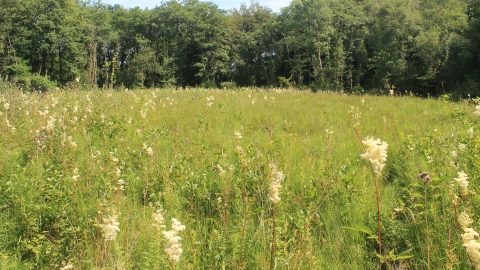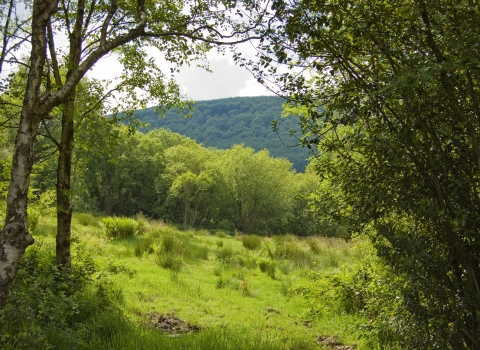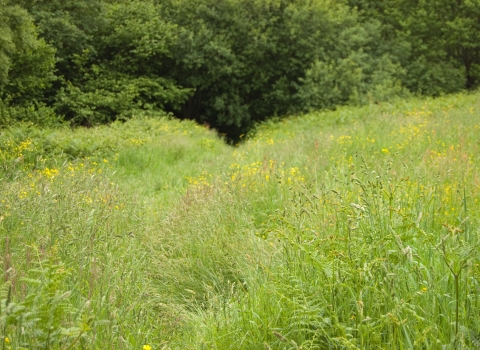
Mike Kilner
Know before you go
Dogs
When to visit
Opening times
Open at all timesBest time to visit
SummerAbout the reserve
One of the finest examples of valley mire habitat left in South Wales, Henllys Bog has been recognised as a Site of Special Scientific Interest (SSSI). Valley mires develop in waterlogged valley bottoms where peat accumulates over time. It is now a relatively rare habitat in Britain as a result of drainage and excessive grazing.
Summer is the best season to visit this small but valuable site. The centre of the reserve becomes a sea of wildflowers, including two unusual species of orchids – the marsh helleborine and fragrant orchids – and broad-leaved cottongrass. Butterflies like marbled whites and common blues flit amongst the flowers whilst the chirrs of crickets and grasshoppers fill the air and dragonflies dart over the boggy ground.
Directions
Henllys Bog can be difficult to find and we recommend you research the route prior to your visit using grid reference ST 26375 92666.
By car:
Travelling south on the A4042, take the 3rd exit at the Crown roundabout for Llantarnam. At the next roundabout, take the 3rd exit on to Llantarnam Park Way and go straight over the next roundabout to continue on this road. At the next roundabout, go straight over again onto Hollybush Way (signposted Ty Coch Ind Est). At the next roundabout, take the 1st exit signposted ‘Hollybush’. Continuing to the next roundabout, take the 1st exit onto Henllys Way (signposted Henllys) and continue along this road for just under a mile before turning left onto Henllys Lane (marked with a small white sign for Henllys Village Nursery). Continue along Henllys Lane until the road bends round to the right with the Nursery on your left. Take the left turning here onto the tarmac road (not the gravel track) and follow it as it climbs until you reach a fork in the road. Take the steep left turn and continue along the lane past the farmhouses and through the courtyard onto a track which descends downhill, becoming uneven in places. Continue past the stables on your left where the track will then branch – take the right fork and climb around the hairpin bend up to Pandy Mawr Farm. Park on the rough ground on the left, before reaching the farm buildings.
To reach the reserve, walk through the metal field gate and follow the green signs along the field edge. Once through the second gate, turn left down the slope towards the block of alders which fringe the reserve.
Near the reserve
The Gwent Wildlife Trust’s reserves of Branches Fork Meadows, Dan-y-Graig and Coed Meyric Moel are a short drive away.
There are lots of excellent walking opportunities in the area, with the nearby hills of ‘Mynydd Henllys’ dotted with cairns and the remains of a medieval castle at ‘Twmbarlwm’. An old tramway leads uphill towards the site of Henllys Colliery and former mine workings.
Species
Contact us
Environmental designation
Join us!
Help protect and support our beautiful nature reserves and local wildlife. Join our community of members today!


